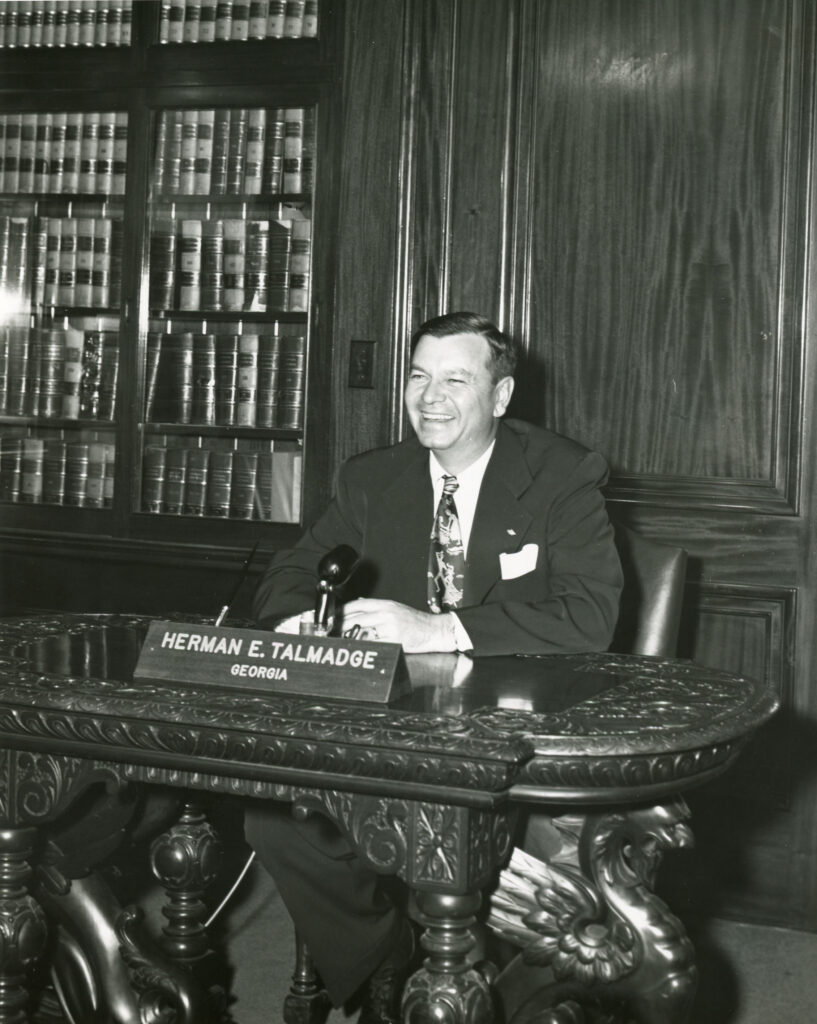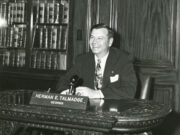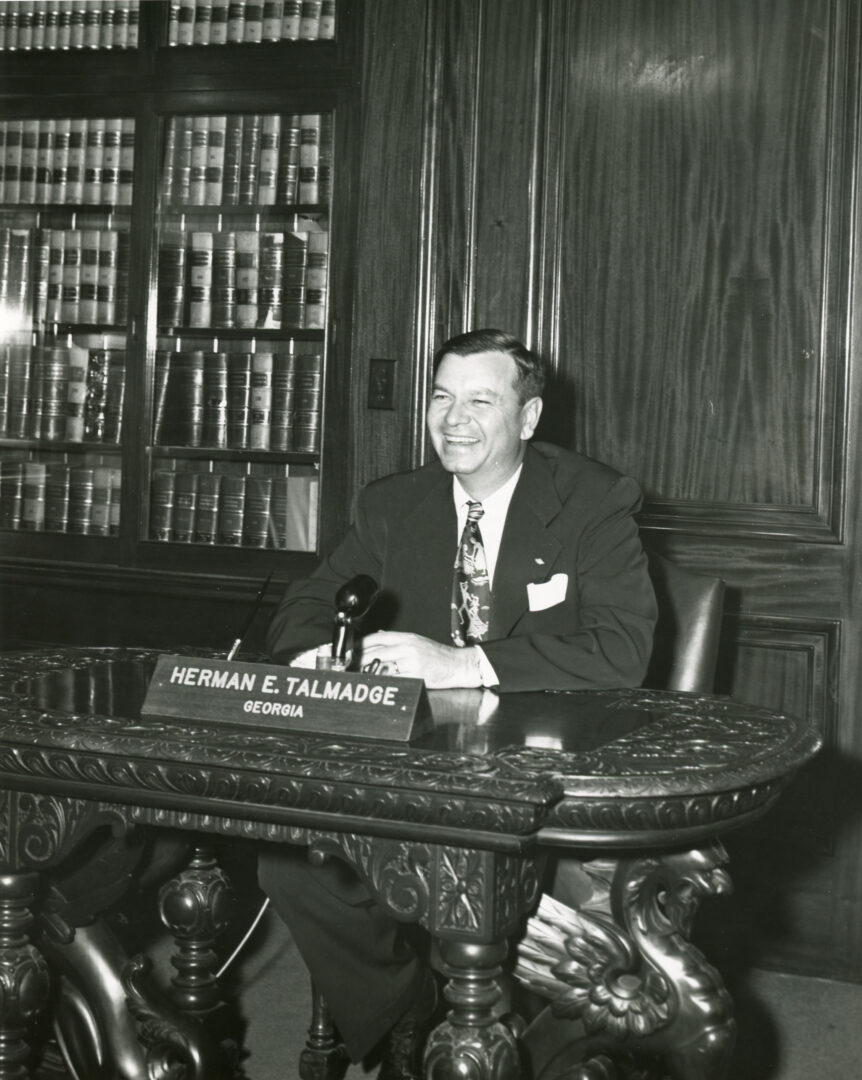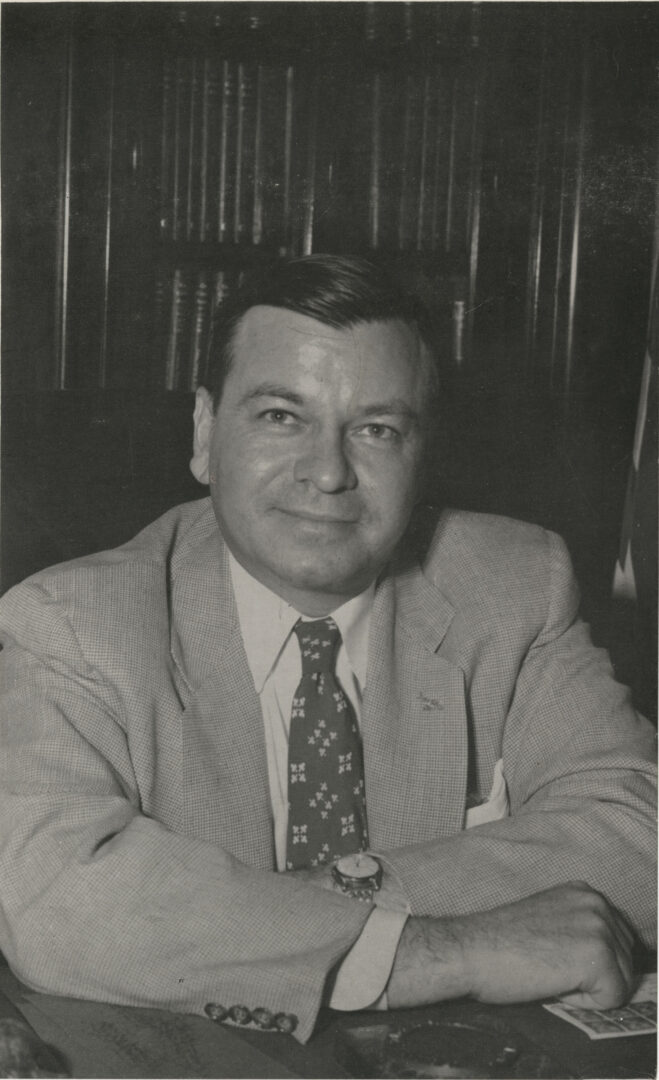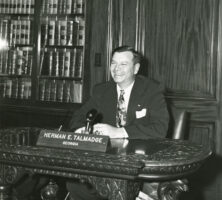Georgia’s “three governors controversy” of 1946-47, which began with the death of governor-elect Eugene Talmadge, was one of the more bizarre political spectacles in the annals of American politics.
In the wake of Talmadge’s death, his supporters proposed a plan that allowed the Georgia legislature to elect a governor in January 1947. When the General Assembly elected Talmadge’s son Herman Talmadge as governor, the newly elected lieutenant governor, Melvin E. Thompson, claimed the office of governor, and the outgoing governor, Ellis Arnall, refused to leave office. Eventually, the Georgia Supreme Court settled the controversy.
Background
In the summer of 1946 Eugene Talmadge won the Democratic primary for governor for the fourth time. His election was assured because the Republican Party in Georgia was not viable and had no nominee. However, Talmadge was not healthy, and his close friends began to fear that he would not live until the November general election or would die before his inauguration in January 1947.
After a great deal of legal research, Talmadge’s followers found dubious constitutional and statutory precedence for the state legislature’s electing a governor if the governor-elect died before taking office. According to their findings, the General Assembly could choose between the second- and third-place vote-getters from the general election. Because no Republican candidate would be running, the Talmadge forces reasoned that a write-in candidate with enough votes statewide would be second or third behind Talmadge, and the General Assembly could choose that candidate if the situation warranted. The Talmadge stalwarts therefore chose to run Talmadge’s son, Herman, as a secret write-in candidate.

There was one problem with this plan: the new state constitution created the office of lieutenant governor, which would be filled for the first time in the 1946 election. The lieutenant governor would become chief executive if the governor died in office. The constitution was not clear about whether the lieutenant governor–elect would succeed if the governor-elect died before he took the oath of office. Melvin E. Thompson, a member of the anti-Talmadge camp, was elected lieutenant governor in 1946. Naturally, the Talmadge forces were not eager for Thompson to become the next governor.
Two Claimants
Eugene Talmadge died in late December 1946. When the General Assembly convened in January 1947, the immediate order of business was to fill the vacant governorship. The Talmadge forces wanted the legislature to elect Herman Talmadge, while Thompson’s allies lobbied the legislature to declare Thompson the governor. According to the state constitution, election results were not official until certified by the General Assembly. Thompson wanted the General Assembly to certify the returns so that, as the official lieutenant governor–elect, he would have a stronger claim to the governorship. Talmadge forces, however, won a close vote to delay certifying the vote and to move immediately to select a new governor. On January 15, 1947, the General Assembly elected Herman Talmadge as governor. Meanwhile, Thompson began legal proceedings to appeal to the Georgia Supreme Court.
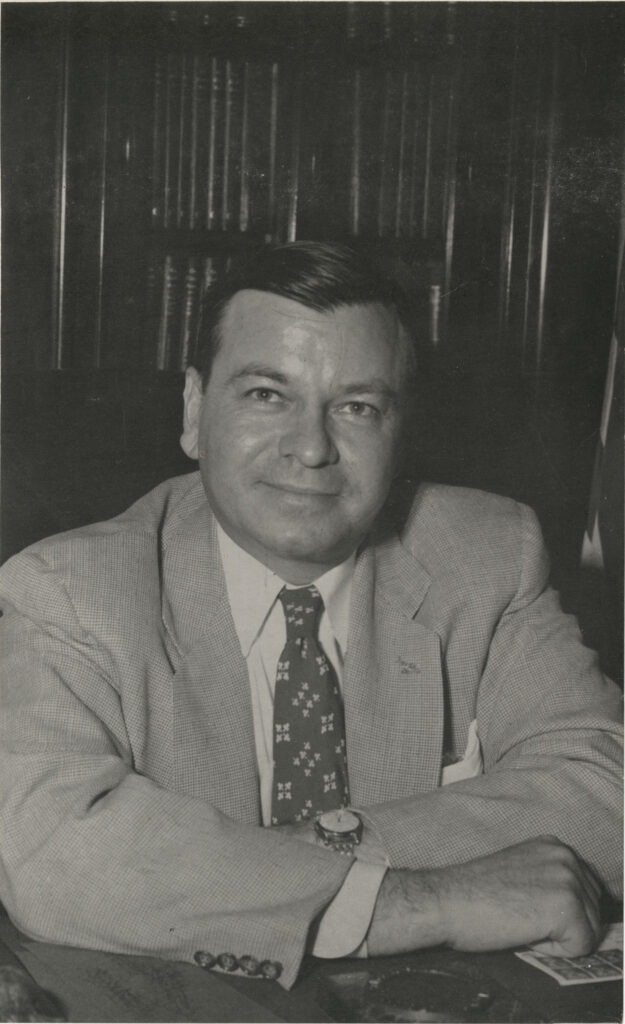
The Third Claimant
As the legislature was electing Herman Talmadge governor and Thompson was preparing a court fight to dispute Talmadge’s election, the outgoing governor, Ellis Arnall, announced that he would not relinquish the office until it was clear who the new governor was. Arnall’s actions galvanized Talmadge’s supporters, who bitterly hated his anti-Talmadge policies. The legislature’s election of Talmadge provoked a confrontation between the Talmadge and Arnall camps. Although the two politicians maintained their decorum, fistfights broke out among their followers.
Talmadge asked Arnall to honor the General Assembly’s election. Arnall maintained that the legislature had no right to elect a governor and refused to step aside. Talmadge then ordered state troopers to remove Arnall from the capitol and see that he returned home safely. On January 15, the day of the legislative election, both Herman Talmadge and Ellis Arnall claimed to be governor of Georgia and shared the same offices in the capitol. By the next day Talmadge had seized control of the governor’s office and had the locks on the doors changed. Arnall continued to maintain his position as governor and even set up a governor’s office in exile in an information kiosk in the capitol. Ultimately, Arnall relinquished his claim as governor and supported Thompson.
An Anticlimactic Ending
After Arnall surrendered his claim to the governorship, Georgia was still left with two governors, each of whom had appointed government officials. The result was two months of chaos. Although both politicians laid claim to the governorship, neither could sign legislation or carry out official actions because the great seal of Georgia had been hidden by the secretary of state, Ben Fortson, who tucked the seal under the cushion of his wheelchair, where it would remain until the court rendered its verdict.
In March 1947 the Georgia Supreme Court ruled that Melvin E. Thompson was the rightful governor because he was lieutenant governor–elect when Eugene Talmadge died. In a five-to-two decision the justices ruled that Thompson would be the acting governor until a special election could be held to decide the remainder of the original term, which would have run from 1947 to 1951. Within two hours of the court decision, Herman Talmadge left the governor’s office. His apparent capitulation surprised many who thought that he might challenge the ruling. Almost immediately he began campaigning for the special election in September 1948.
In hindsight, the controversy seems almost comical, a relic of an era of Georgia politics that is long dead. At the time, however, it was a source of great embarrassment for business leaders of the state. Georgia’s national reputation, already unsavory, took an even further blow. Moreover, the episode had several far-reaching consequences. First, it strengthened Herman Talmadge’s political reputation. His handling of the court decision earned him a great deal of respect among younger voters and returning World War II (1941-45) veterans. Hard-core Eugene Talmadge supporters, the “wool hat boys,” flocked to young Herman because of their perception that the anti-Talmadge forces had stolen the election. The events of 1946-48 also marked the last gasp of the anti-Talmadge faction. After Herman Talmadge’s easy victory over Thompson in 1948, no avowed member of that faction ever occupied the governor’s office again.
